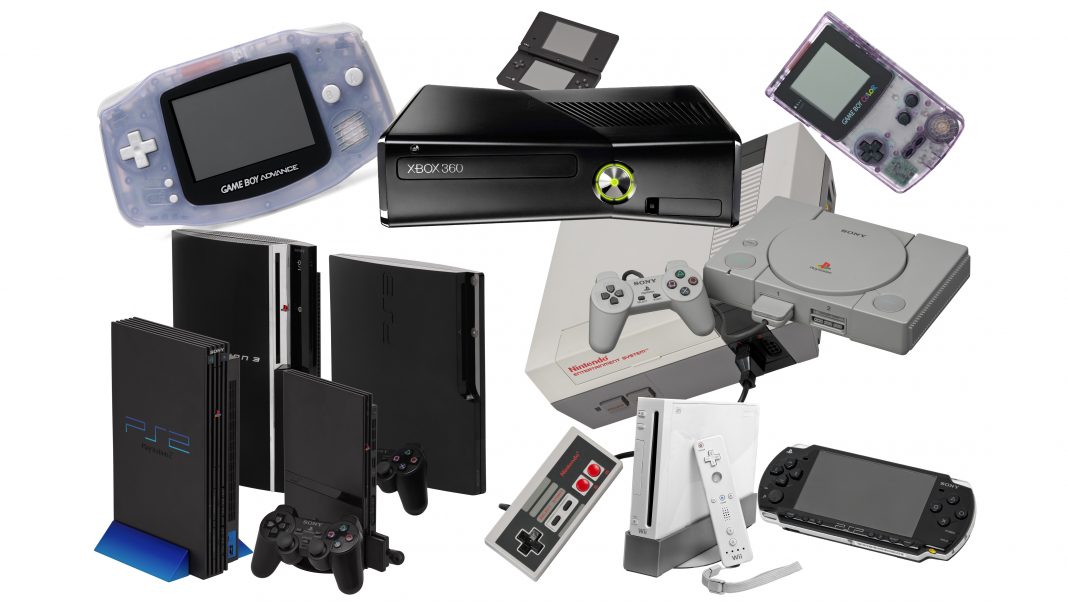Video games have been around since the early years. The only way you get to play these video games is through machines called video game consoles. There have been numerous amounts of video game consoles from all around the world. Some of these consoles may have been bootleg or pirated versions but they console none the less. We’re not simply talking about handheld systems but the bulky big gaming consoles. PCs don’t count as well since they are a different type of hardware even if they play video games. Video game consoles have come and go and there have been those that have sold well while some have disappeared in the dust. Understanding the value and effectiveness of these consoles is ideal. You may be a gamer or not but these consoles have helped shape the course of history in the industry.
1. The Atari 2600
The Atari 2600 made its debut in 1977 is arguably the most successful console in the early ’80s. The system wasn’t the first but it paved the way for future consoles. It further improved the concept of interchangeable cartridges since some of the early consoles had the game’s built-in within them. Granted the graphics of 2600 may not be appealing for today’s audience.
The Atari 2600 led to the Videogame Crash of 1983 due to a large amount of sub-par games in the console’s library. This could have been blamed through Atari’s lack of management and quality control. The system has ceased production in 1992.
2. The Nintendo Entertainment System
The NES was released in Japan around 1983. The NES had a risky launch since it was 2 years after the 1983 crash. The NES made its way secretly to America and revived the video game industry. The graphics were far superior to the Atari 2600 and the gameplay offered more variety. The NES had a unique packaging when it first came as the console served as a bonus while the main feature was a robot named ROB.
The NES had then made waves in the late 1980s as people realized that it was better and more manageable. Nintendo also had a way to lock out any unauthorized video game makers which avoided making another video game crash.
3. The Sega Genesis
The NES garnered a lot of notoriety and fame during its 8bit era run while Sega’s console the Master System was limited. The Sega Genesis was first released in Japan around 1988 before making its way to America in 1989. The Sega Genesis had one bragging right back then and it was a 16bit system. Despite the NES’ success, it was undeniable that the Genesis had the edge in terms of graphical capabilities. The visuals captivated a lot of players as it had graphics that they hadn’t seen before.
They also introduced to an aspect of Blast Processing which would produce frame rates at a very fast speed. Its introduction game to this feature was Sonic the Hedgehog. The Genesis did have a lot of failed add-ons later on but the Genesis itself is a good system.
4. The Super Nintendo Entertainment System
The SNES was Nintendo’s response against Sega’s Genesis. The SNES was released in Japan around 1990 and in America around 1991. The SNES used a 32-bit processing chip which was more superior to the Genesis’ 16bit. During the mid-1990s this sparked a war called the bit wars. It was simple and healthy competition between the SNES and the Genesis to see which system would be better. The SNES clearly had the advantage with its awesome game library. It also had the edge in terms of graphics and sounds. The SNES further developed a lockout system that wouldn’t play any unlicensed games produced by third-party developers.
The SNES would have very little flaws and a lot of its fan base originated since the NES days. The SNES was definitely one of Nintendo’s most successful consoles and it’s still available for sale today.
5. The Playstation 2
Playstation 1 was definitely one of the consoles that helped revolutionize the world of video games. It was the first system to fully maximize the potential of CDs as a means of game cartridges. The PS1 was a success but the PS2 was more successful as it improved in all of the PS1’s aspects and features. The PS2 originated from Japan and was released by Sony around March of 2000. It came to America around October of the same year. The PS2 enhanced a lot of the specs of PS1 and here are some of them. Instead of using CD’s with minimal memory spaces, the PS2 used DVD discs with at least 1.5 GB memory storage. The graphical presentation of the PS2 was far superior to the PS1 and any of the current consoles around that time until the release of the Xbox which features slightly similar graphical capabilities.
The PS2 memory card also had 8MB storage while the PS1 only had u saved 15 times. The PS2 was indeed a success and even after the PS3 was released the PS2 was still selling until it was discontinued in 2013.
The videogame consoles of each time and era have had their share of notoriety. It’s undeniable that without these consoles the videogame industry may have dried up and gone since then.
